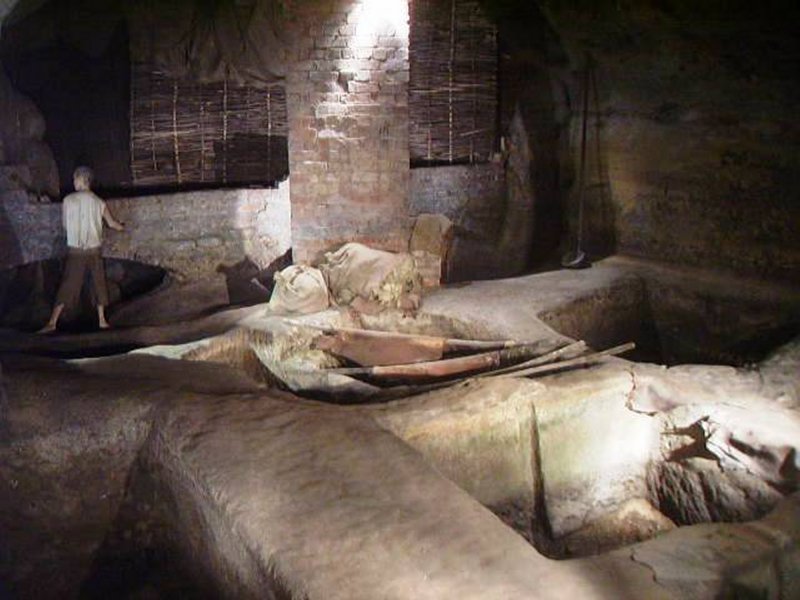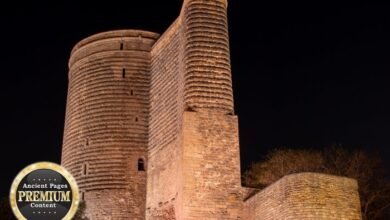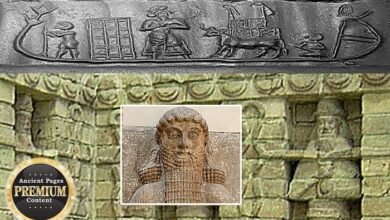Rare Artifacts Found In Nottingham’s Mysterious Caves On Display For The First Time

Jan Bartek – AncientPages.com – The exploration of caves and hidden underground tunnels offers an experience similar to stepping into a mysterious realm. One never knows what can be found along the road, which makes the journey even more fascinating.
There are hundreds of caves and secret passages beneath the city of Nottingham in the UK.
Nottingham caves. Credit: Adobe Stock – Wajan
The purpose and original users of these ancient subterranean areas remain largely unknown due to the scarcity of historical documentation.
“Many stories have been passed down from one generation to another. However, this information is not necessarily accurate. We know that beneath Nottingham Castle is a labyrinth of manmade tunnels and caves hollowed out of the sandstone cliffs.
The walls of these underground realms have a long history and keep many secrets of Nottingham and another very ancient city located beneath the streets of the old town.” 1
If you are interested in the enigmatic realm of subterranean caves and find yourself within a reasonable distance from Nottingham, it would be highly recommended to visit the free exhibition ‘Fascinating Finds from Nottingham’s Caves.’ This intriguing display is hosted at the University of Nottingham Museum.
‘Fascinating Finds from Nottingham’s Caves’ reveals for the first time an extensive collection of objects from many different periods in history that have been discovered inside the caves.
“There is a long history of people excavating inside Nottingham’s caves, including both professional archaeologists and voluntary community groups – so it is wonderful to see this variety of fascinating objects brought together for the first time. They range from humble clay pipes and storage jars to exotic imports like the Venetian goblets.
Together, these objects tell the story of the city and connect us to the multitude of people who once lived and labored in and around the city’s underground spaces,” Dr. Chris King, Associate Professor in Archaeology at the University of Nottingham’s Department of Classics and Archaeology said.
Medieval Tannery at City of Caves in Nottingham. Image credit: Mutt – CC BY-SA 3.0
Though how and why some Nottingham caves were used remains a matter of speculation, scientists have determined the earliest known caves date from the Medieval period, and they were used for many different purposes over the centuries.
Historically, caves served as practical storage spaces beneath buildings, and many of the city’s historic pubs still use a cave as their beer cellar. Additionally, these caves were employed as workshops for various crafts, including leather tanning and grain malting for beer production.
“Some of the most elaborate caves were dug by the town’s wealthy elite for leisure and entertainment, as garden follies or drinking dens. In the Second World War, many caves served a more vital purpose as air raid shelters to protect the city’s population from bombing.” 2
The exhibition Fascinating Finds from Nottingham’s Caves offers a unique opportunity to admire never-before-see artifacts found in Nottingham caves. Credit: Nottingham University
One highlight of the exhibition is an exceptional assortment of 17th-century glass bottles and decorative Venetian drinking glasses. These items, on loan from the National Justice Museum, are being publicly exhibited for the first time. They were unearthed in a rock-cut well next to the Shire Hall – formerly known as Castle Inn, one of Nottingham’s most prestigious taverns in its time. The artifacts continue to be displayed throughout the venue. Visitors will also be able to admire highly decorative slipware plates and drinking vessels, which show how much the town elite enjoyed their fine dining.
“It has been a wonderful opportunity to bring these fascinating collections together and work with colleagues across the city to develop this exhibition. Alongside the exhibition, there is also a program of gallery tours, talks, and family events,” Dr. Clare Pickersgill, Keeper of the University of Nottingham Museum said.
The exhibition is now open and closes on Sunday, 7 July. Opening times are Thursday and Sunday 12 – 4 pm. The exhibition is free.
Written by Jan Bartek – AncientPages.com Staff Writer
Expand for references







